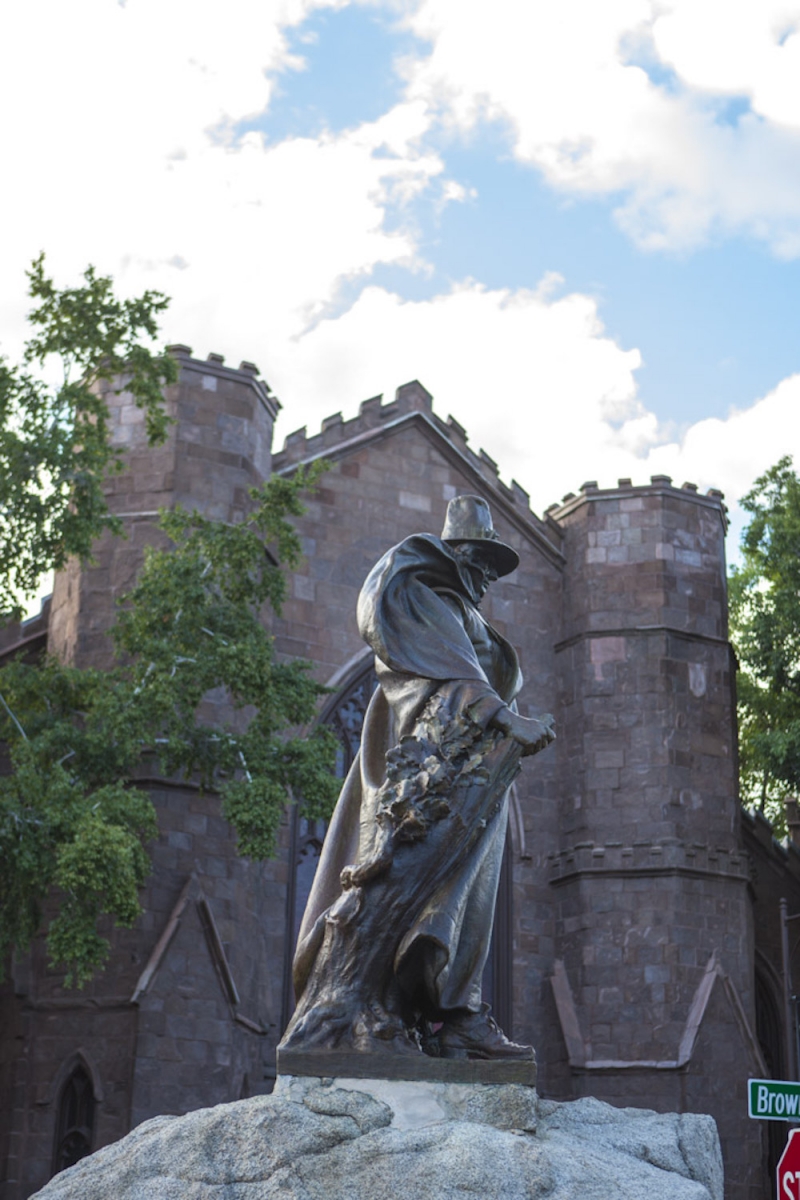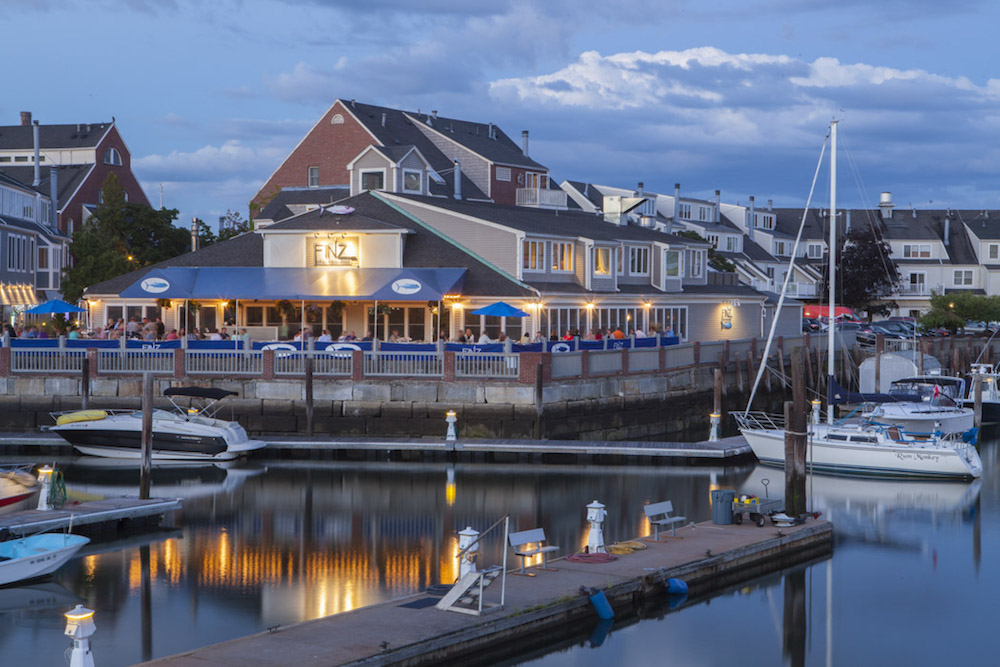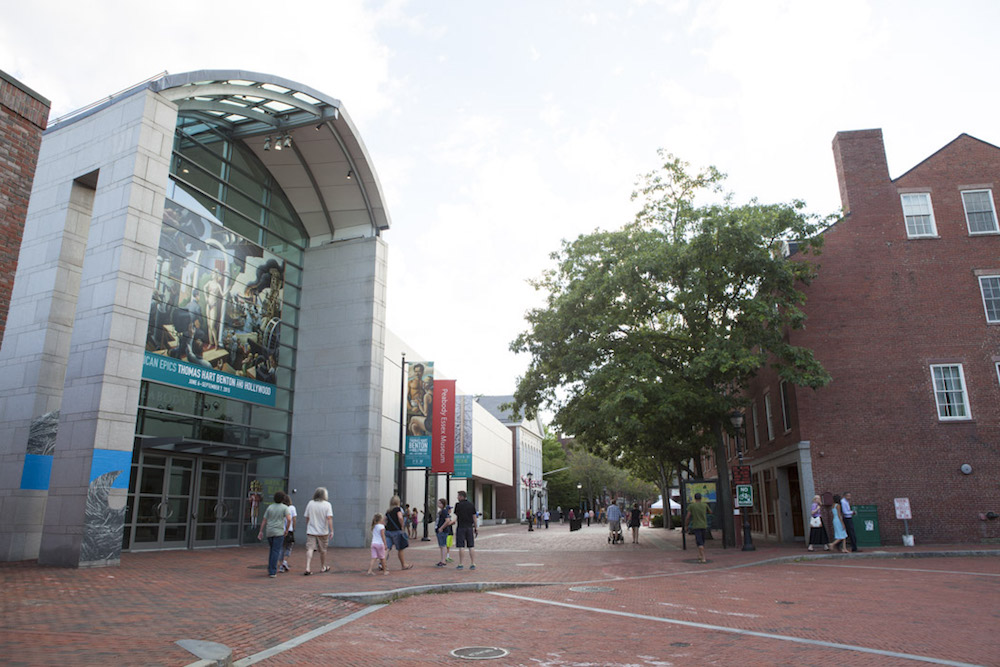As Salem’s most notable literary figure, Nathaniel Hawthorne complained about his hometown, preferring more natural locales with his Transcendentalist friends. Yet, in The Scarlet Letter, he wrote of his inability to never quite leave. Like so many today who seem destined to return to Salem again and again, he wrote, “It was not the first time, nor the second, that I had gone away—as it seemed, permanently—but yet returned, like the bad half-penny; or as if Salem were for me the inevitable centre of the universe.”
With its population of 43,000, Salem can feel like the center of the universe for those who live here, many having come from far-flung places around the world. Curious types leave for bigger, more glamorous ports, only to find themselves returning to this tiny walkable hub with its active citizenry.
These days, Salem lies in a big town/small city sweet spot and has multiple cosmopolitan selling points, including a strong LGBT community and one million tourists from around the world visiting each year to make sense of its mystique. Once capturing the imagination of Hawthorne and Arthur Miller, it now lures countless novelists, playwrights, and TV and film producers.
With such a rich and complex history, some of the best Salem stories can get lost. The city’s Puritan past tends to eclipse other interesting points in time. Among other things, Salem served as a center of privateering during the Revolutionary War, and it’s the birthplace of the National Guard, the site of the first long-distance phone call, and home to the brilliant Peabody sisters and countless important first Americans, including immigrants from around the world.

These days, Salem is making history with its efforts to protect residents who are illegal immigrants. “We learned from 1692 [about what happens] when people don’t stand up for atrocities that are happening,” Mayor Kim Driscoll told WBUR last spring, adding that every member of the Salem community should feel comfortable seeking help from law enforcement without being asked for documentation. With Salem’s 400-year history of welcoming immigrants, people should know that “their hometown has their back.”
The brief but darkest period in Salem’s history has recently been reexamined. This past summer marked the 325th anniversary of the witch trials, and in a quiet ceremony, the city honored the 19 men and women who were killed. Still, a certain magic can be felt in the vibrancy of Salem, which defies most characterizations of an American place of its size. Its world-class Peabody Essex Museum, tied to Salem’s maritime history and trade, features contemporary artists navigating the current cultural exchange.
Twelve years ago when I moved to Salem, we could say, “Let’s meet for lunch,” without needing to specify where, since the options were that limited. Now, it’s hard to keep track of all the restaurant openings, much less bagel, cookie, and pierogi pop-ups.
“We could totally be in New York right now,” a weekend visitor from Brooklyn recently said over smoky mezcal cocktails at Ledger, the renovated historic bank building on Washington Street.

The key to Salem is its walkability. If not traveling on foot, one completely misses the local chat spilling from Salem’s coffee shops, the various languages and accents spoken by its visitors, the live music drifting from a bar, the public art on the side of a building, and interesting exchanges taking place in the theatre of the street. Whether you’re taking in the sailboats in the harbor or the echo of ghostly footfalls on the cobblestones, being a pedestrian is the only way to catch the nooks, alleyways, and subtleties that make Salem special. Linked to Boston by train and ferry, with less than 10 square miles of land, Salem is a Fitbit wearer’s dream.
Walking everywhere to try new restaurants (and old favorites) is part of the Salem lifestyle. This fall, locals are heading upstairs to The Roof atop the newly built Hotel Salem, to discover an outdoor kitchen serving up tacos, ceviche, and oysters with expansive views of the cobblestone streets and bustling harbor. For those who think they know Salem, perhaps it’s better to visit it again like a local. Whether you’re looking for a French patisserie, ramen, seafood, or BBQ, it can all be found within a few blocks.

Consider also walking to Greenlawn Cemetery in North Salem. This 100-acre parklike space glimmers on sunny days. Stroll the winding lanes encircling ponds and thickets of old-growth beech and contemplate Salem’s important place in history. Salem’s military past, its immigrant population, and its place in African American history are all here beside a jewel box-like chapel, considered to be a High Victorian Gothic work of architecture.
Few people are ambivalent about Salem, Massachusetts. It strikes a chord, deep down. When I first visited at the age of 15 from the Midwest, I proclaimed the Witch City to be too full of chaotic energy for my liking. Today, it’s that energy that keeps me walking and constantly seeing it anew.
See our Salem must-do list here.

